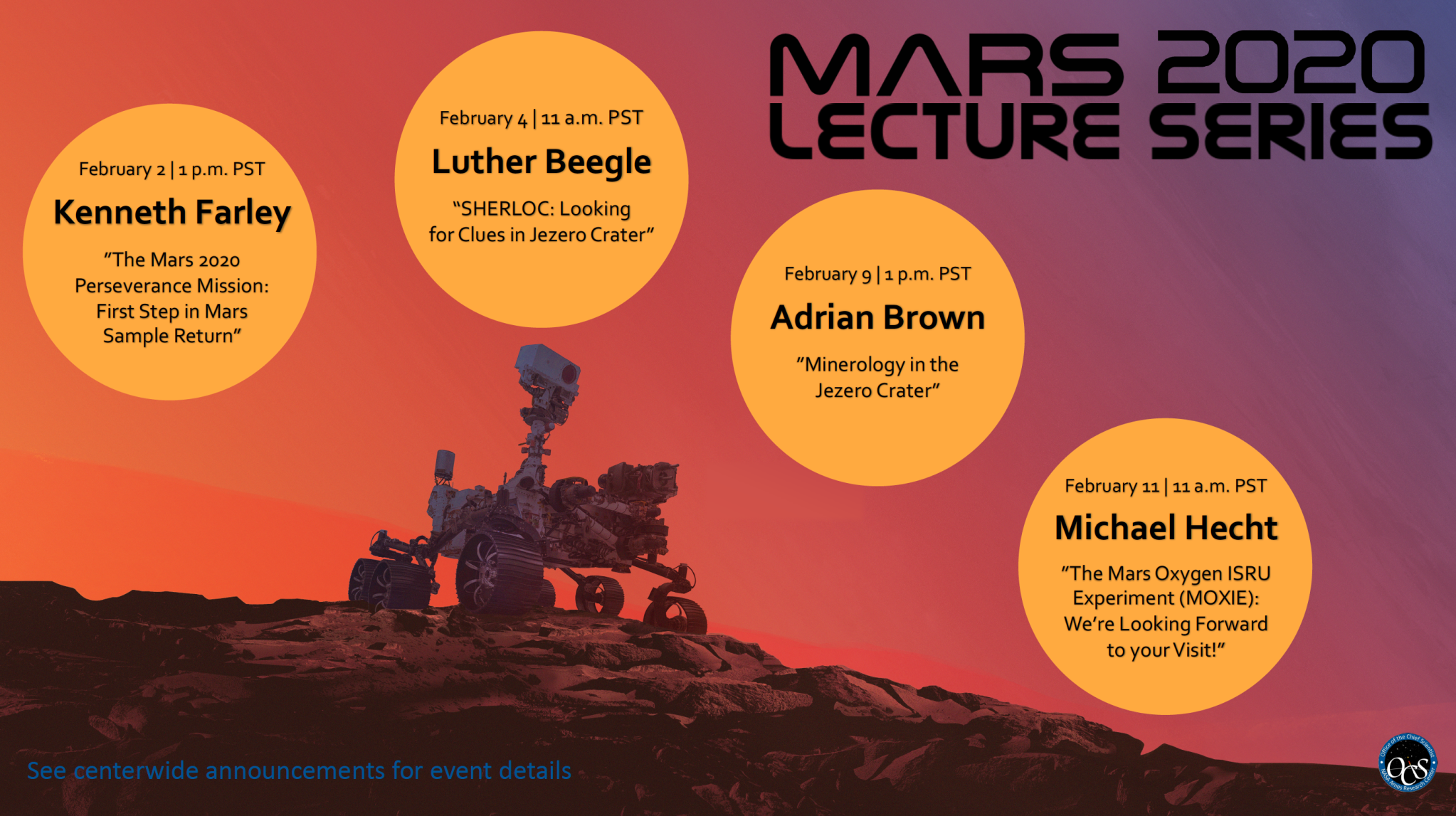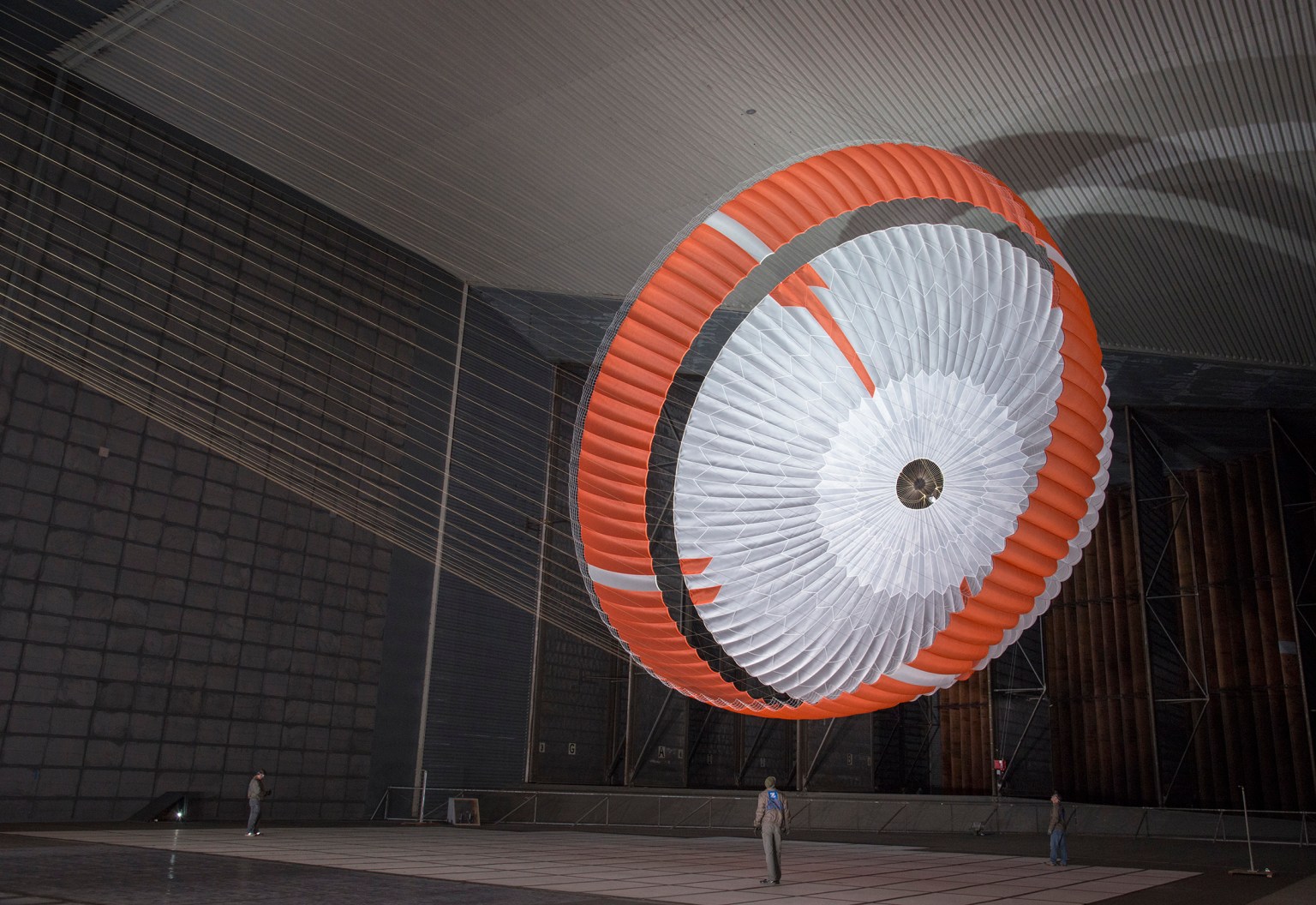“Mineralogy of the Jezero Crater Region” was presented by Dr. Adrian Brown on February 9, 2021 as part of the four-lecture series celebrating the landing the Perseverance rover.
See your centerwide announcement for event details and log on information.
Jezero Crater was selected as the landing site of the Mars 2020 rover mission after a five-year search, chosen from over 60 potential locations by the mission team and the planetary science community. What makes this crater just north of the Martian equator so special? Jezero Crater is believed to have once been an ancient river delta, where minerals, such as olivines and carbonates, and organic molecules gathered. Since Mars has no plate tectonics, geologic formations from billions of years ago remain intact today, providing scientists ample opportunity to study the history of the landing site. Please join Dr. Adrian Brown, the Mars 2020 Deputy Program Scientist, as he discusses how the Perseverance Rover will characterize the mineralogy of the Jezero Crater and help determine the region’s previous habitability.
Abstract:
Dr. Brown will talk about the Mineralogy of the Jezero crater region, which is the landing site of the Perseverance rover. Dr. Brown and two colleagues recently published a 2020 JGR paper reporting research supported by the NASA Astrobiology Program which has provided new insight into the history of minerals in the landing site. The research team used remote sensing data from an instrument aboard NASA’s Mars Reconnaissance Orbiter (MRO) to identify correlations between Olivine and Carbonate in the area that will soon be home to the Perseverance rover.
Olivine refers to a group of minerals that are associated with volcanic activity. Olivine is a silicate containing varying amounts of magnesium (Mg) and iron (Fe). Carbonate refers to minerals that contain a carbonate ion (CO32-), and are of interest to astrobiology because they are typically formed through the interaction of carbon dioxide and liquid water. Dr. Brown will discuss how this makes these carbonate deposits excellent targets of study for astrobiologists who are trying to determine the habitability of ancient Mars.
Biography:
Dr. Adrian Brown is currently working as the Deputy Program Scientist for the M2020 mission at NASA Headquarters in Washington D.C. Adrian has a background in computer science and electrical engineering – his first degree was in Electrical Engineering from the Australian Defence Force Academy in Canberra, Australia. After receiving his Electrical Engineering degree, Adrian served with the Royal Australian Navy as a Weapons Engineer and Fire Control Officer on Her Majesty’s Australian Ships CANBERRA and ARUNTA, in addition to numerous shore postings around Australia. Adrian completed his PhD in Earth and Planetary Science at Macquarie University, in Sydney, Australia. The topic of his defence was “Hyperspectral Mapping of Ancient Hydrothermal Systems” and produced hyperspectral maps of the ancient North Pole Dome region which is home to the most ancient stromatolite units currently known.
After completing his PhD, Adrian was selected as a 2006 NASA Postdoctoral Scholar at the NASA Ames. Adrian then became a research scientist at the non profit SETI Institute where he conducted planetary science research, primarily on Mars using the CRISM instrument on NASA’s MRO spacecraft. While at the SETI Institute, Adrian ran the research and public SETI Seminar series.
































